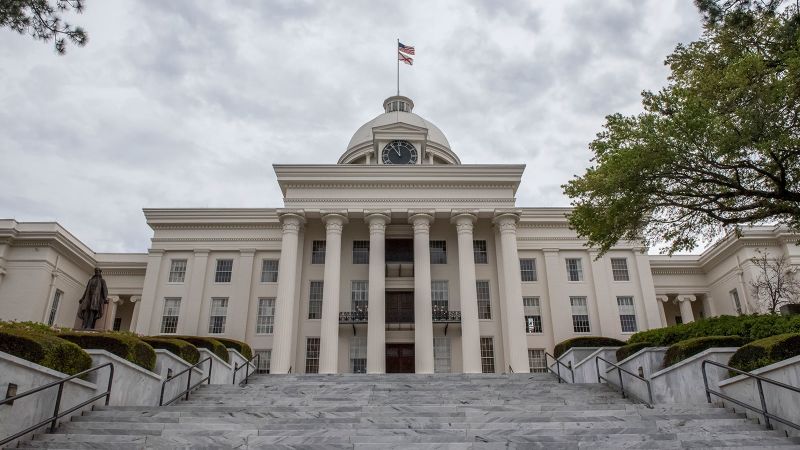A court-appointed special master offered three proposals on Monday to boost the Black voting-age population in a reconfigured Alabama congressional district – the latest development in a closely watched redistricting case with implications for control of the US House of Representatives after next year’s elections.
The maps drafted by special master Richard Allen and his team were submitted to a three-judge panel that is drawing new congressional lines in Alabama after state lawmakers defied federal court orders to create a second congressional district in which Black voters could make up a majority or at least come close to it.
Currently, only one of Alabama’s seven congressional districts is majority Black, although Black residents make up 27% of the state’s population. A second Black-majority district in Alabama could offer Democrats an opportunity to pick up another House seat in the 2024 elections, threatening Republicans’ narrow majority in the chamber.
One of the maps submitted by Allen would create a second congressional district in southeastern Alabama with a 50.1% Black voting-age population. Two other plans for the district would put the Black population at either 48.7% or 48.5%.
All exceed the roughly 40% Black population in the second district that had been proposed by Alabama officials and rejected by the federal judges as improperly diluting Black political power in this Deep South state.
Deuel Ross, deputy director of litigation at the NAACP’s Legal Defense and Educational Fund and the attorney for some of the plaintiffs in the case, said he was pleased to see that the plan boosting the population to 50.1% hewed closely to one submitted by his team.
The plaintiffs still were evaluating the other two alternatives, he said.
Kareem Crayton, a redistricting expert at the liberal-leaning Brennan Center for Justice and an Alabama native, said the special master had clearly been guided by the three-judge panel’s admonition to devise a majority Black district or something close to it.
But he noted the line-drawing team also made clear that they had not considered racial population data in devising the maps – likely an effort to insulate their proposals from attacks they engaged in “race-predominant” redistricting.
But, in doing so, “the question is: Have you done a service to the parties that have been injured here?” he asked.
A spokesperson for Alabama Secretary of State Wes Allen said Monday evening the officials there had just received the proposals and still were reviewing them.
The redistricting fight has captured national attention.
Back in June, in a case concerning an earlier map, a divided Supreme Court affirmed a lower-court opinion ordering Alabama to include a second majority-Black district or “something quite close to it” to its seven-seat congressional map.
The 5-4 opinion was penned by Chief Justice John Roberts, who drew the votes of fellow conservative Justice Brett Kavanaugh as well as the court’s three liberal justices.
But when Alabama produced its new map in July, it came under immediate legal challenge because the state, once again, declined to create a second majority-Black district. State legislators instead simply increased the Black percentage to roughly 40% in one of the state’s majority-White districts.
The same three-judge panel, which had overseen the case before it reached the Supreme Court the first time, wrote that it was “disturbed” by Alabama’s actions in the case and invalidated the map. It had ordered a special master to propose several new maps by Monday.
Those federal judges are slated to hold an October 3 hearing on the maps.
But even as the lower court presses ahead with plans to approve a map that can take effect before the 2024 elections, Alabama officials are attempting to overturn the lower court’s decision. They have asked the US Supreme Court to intervene to put the lower court ruling on pause.
The high court has not yet ruled on that request.
Plaintiffs in the case have accused Alabama of “unabashedly” defying the federal courts.
Alabama officials deny that, saying they have followed traditional redistricting practices and cannot elevate race above other considerations when deciding congressional maps.
“The State of Alabama has been maligned as engaging in ‘open rebellion,’” state Attorney General Steve Marshall wrote in a recent filing before the high court. Marshall, a Republican, has argued that the legislature’s map keeps communities of interest intact.
The maps released Monday are a sign of progress, said Ross, the attorney for some of the plaintiffs.
“We’re glad to see the case is moving forward,” he said. “Our hope and expectation is that Supreme Court will not step in.”
Read the full article here



